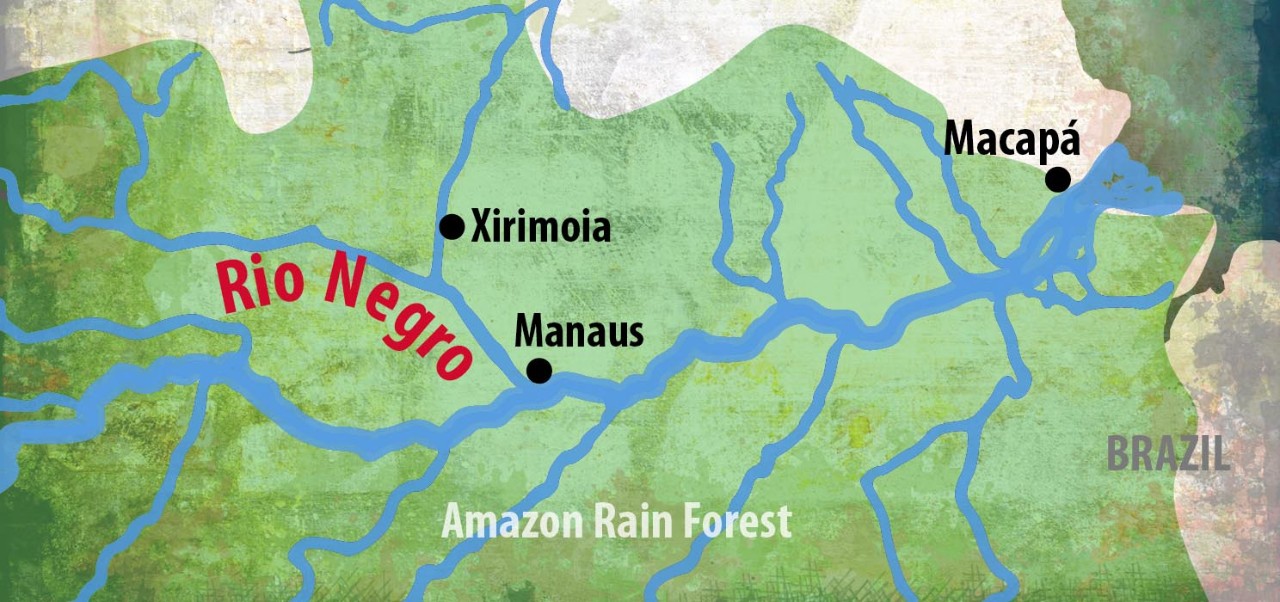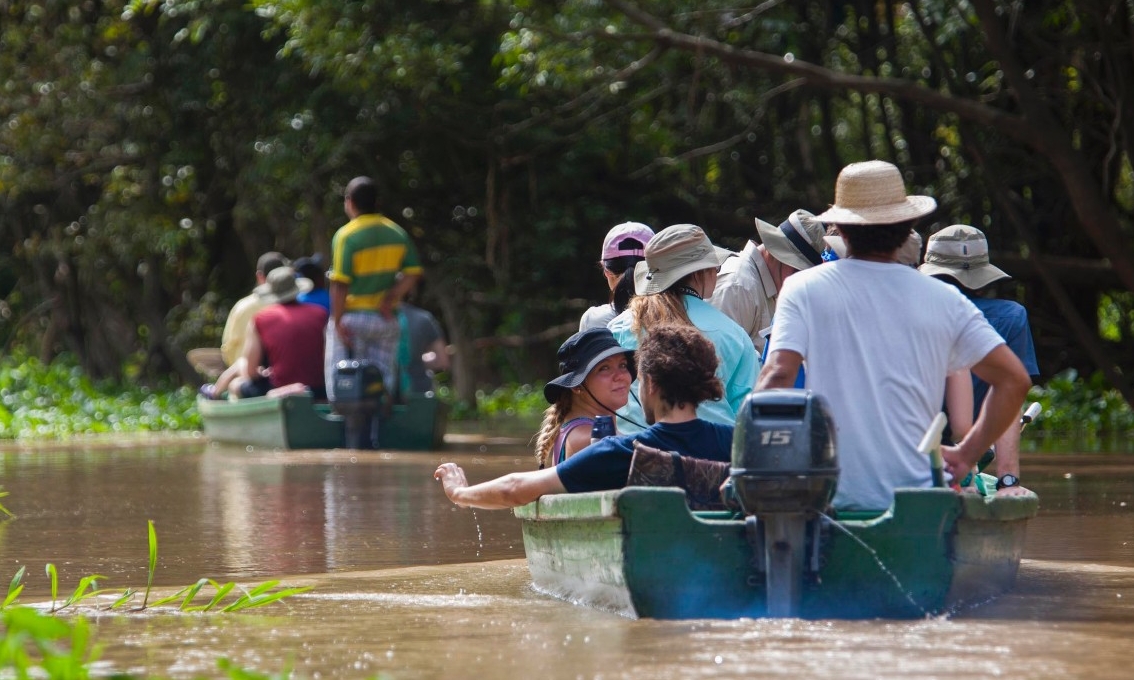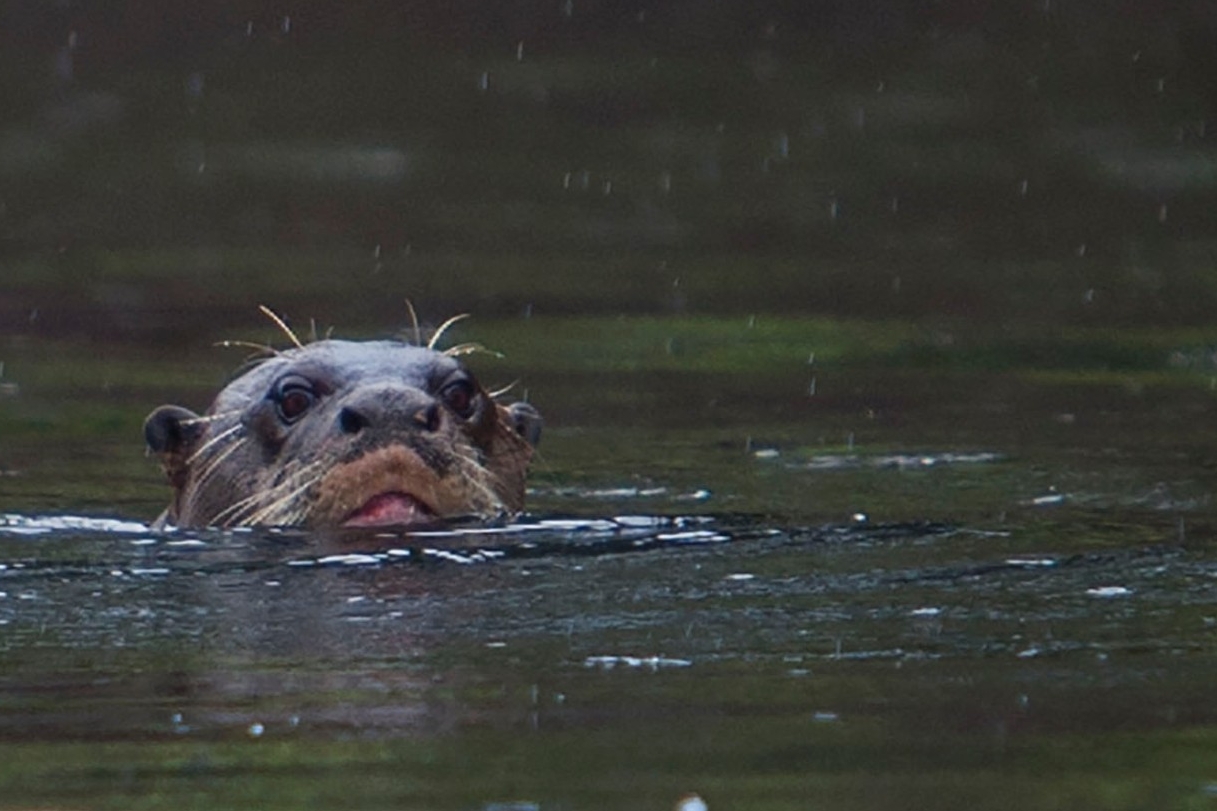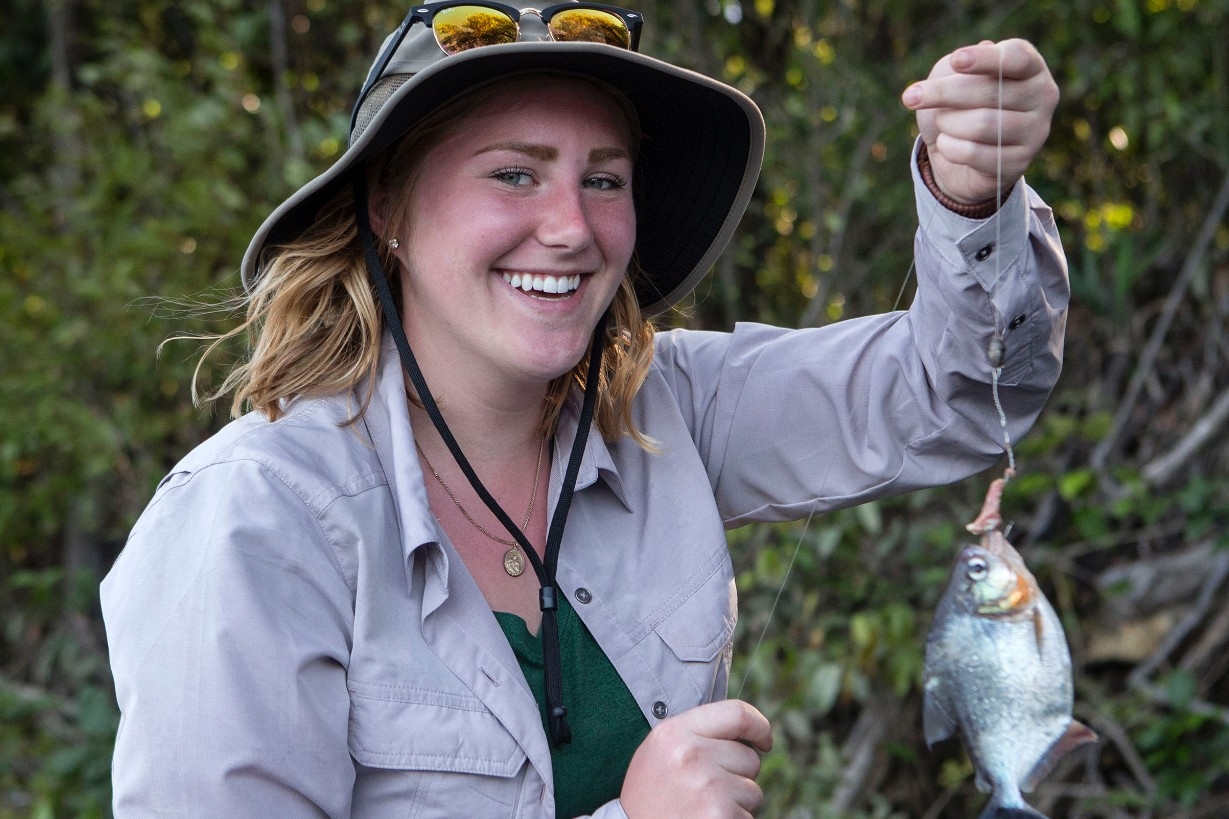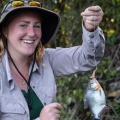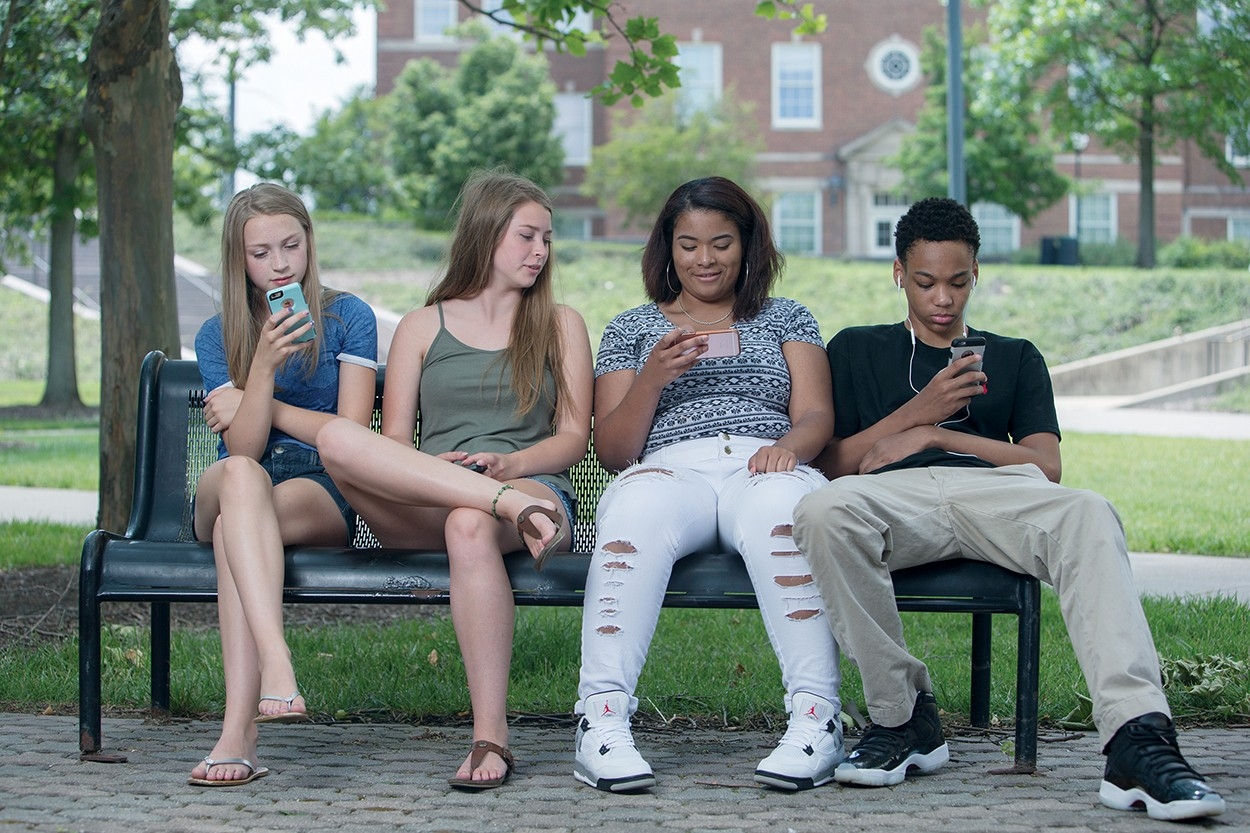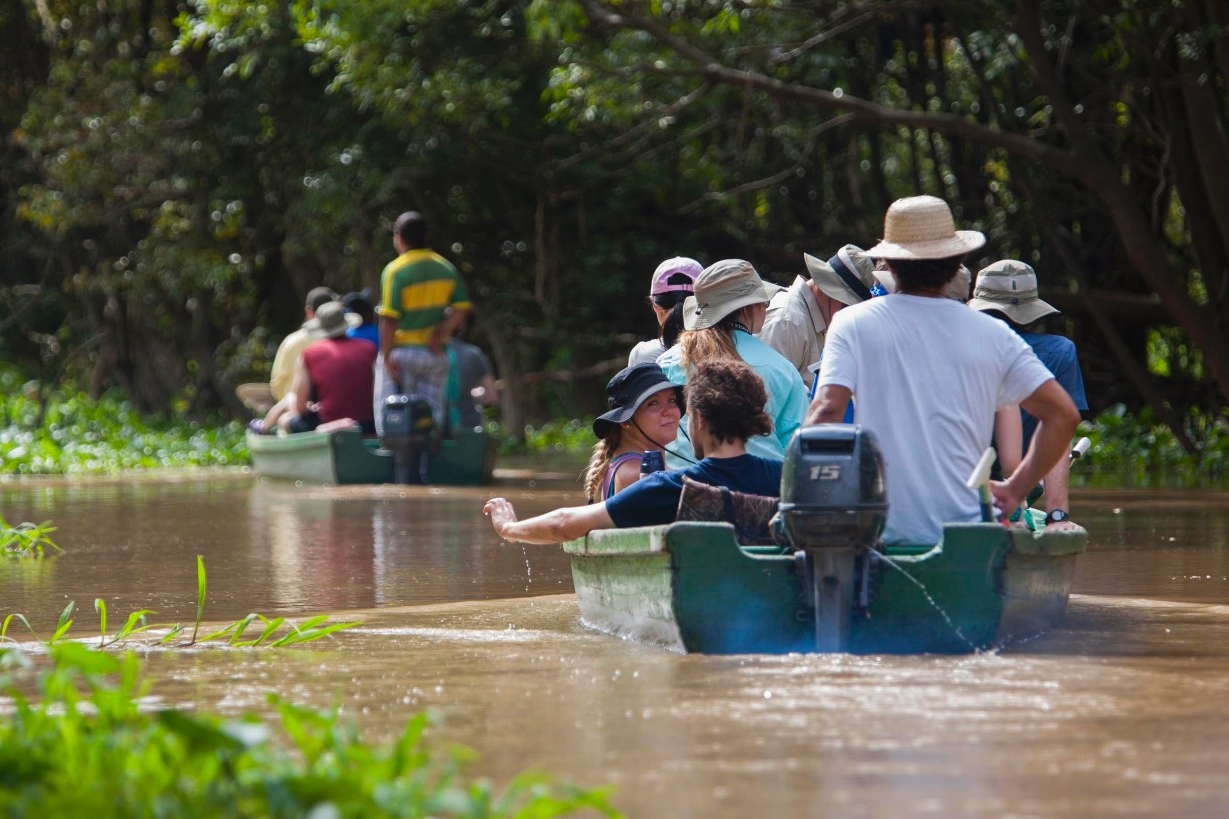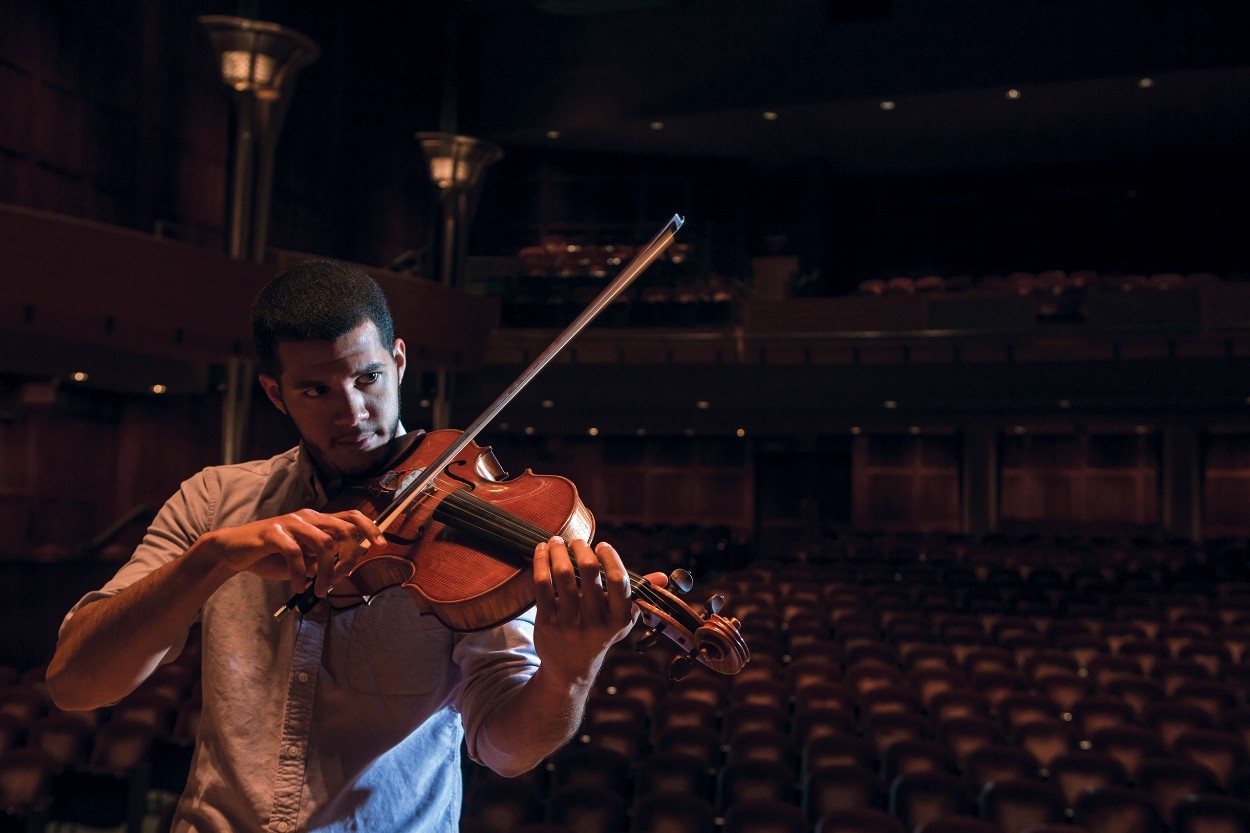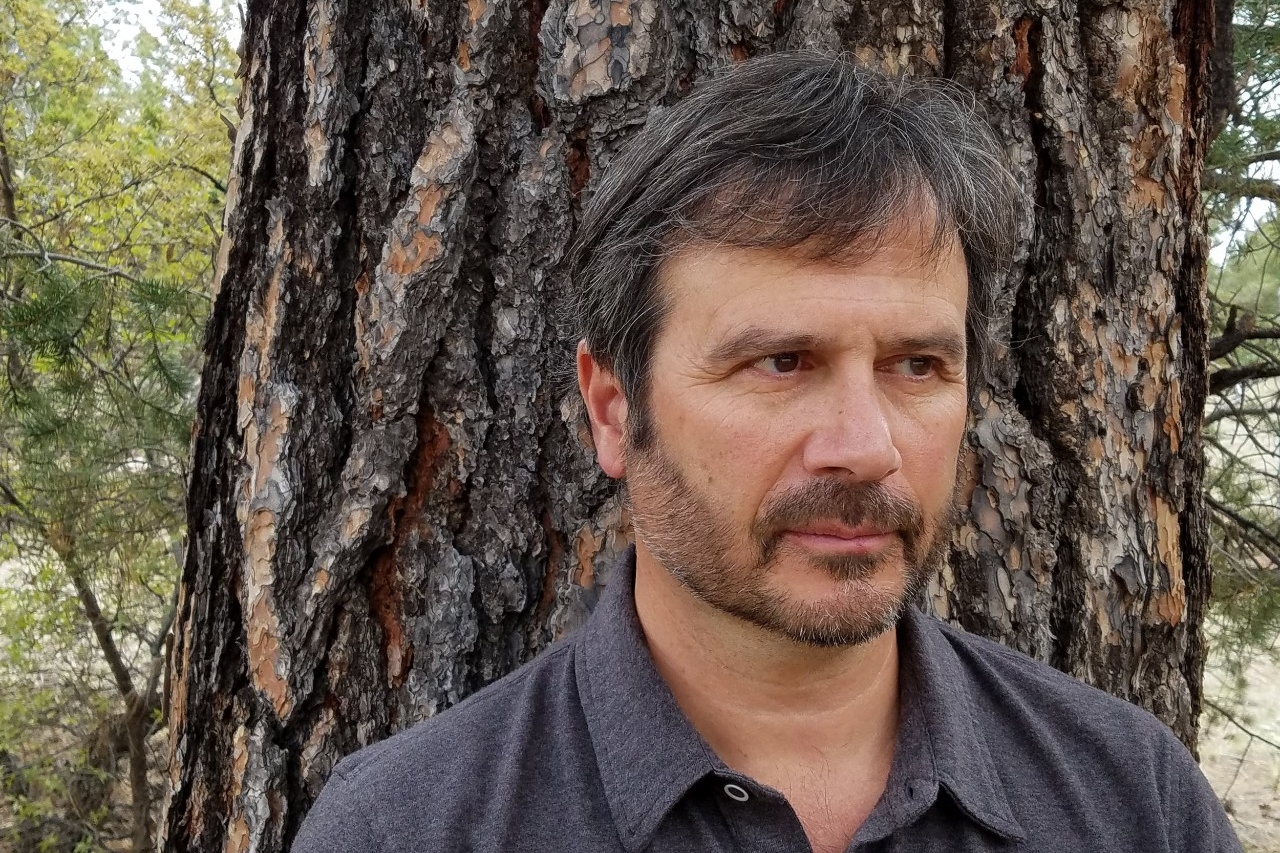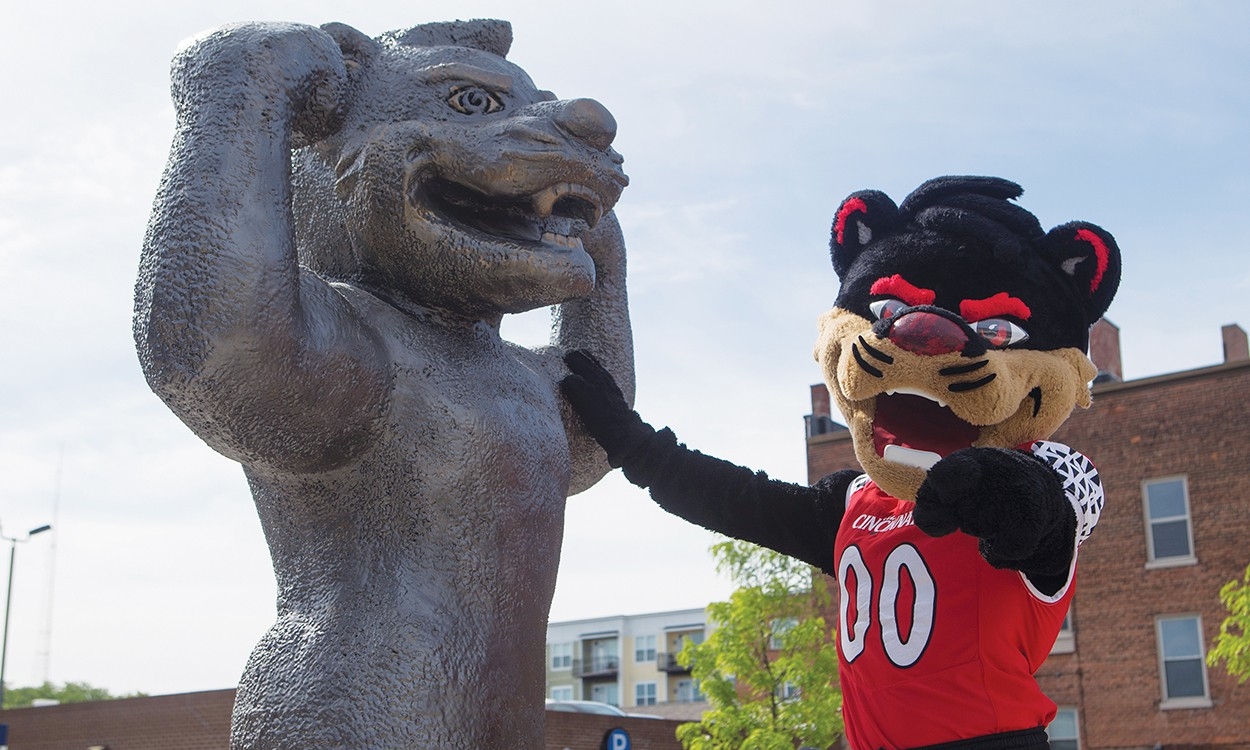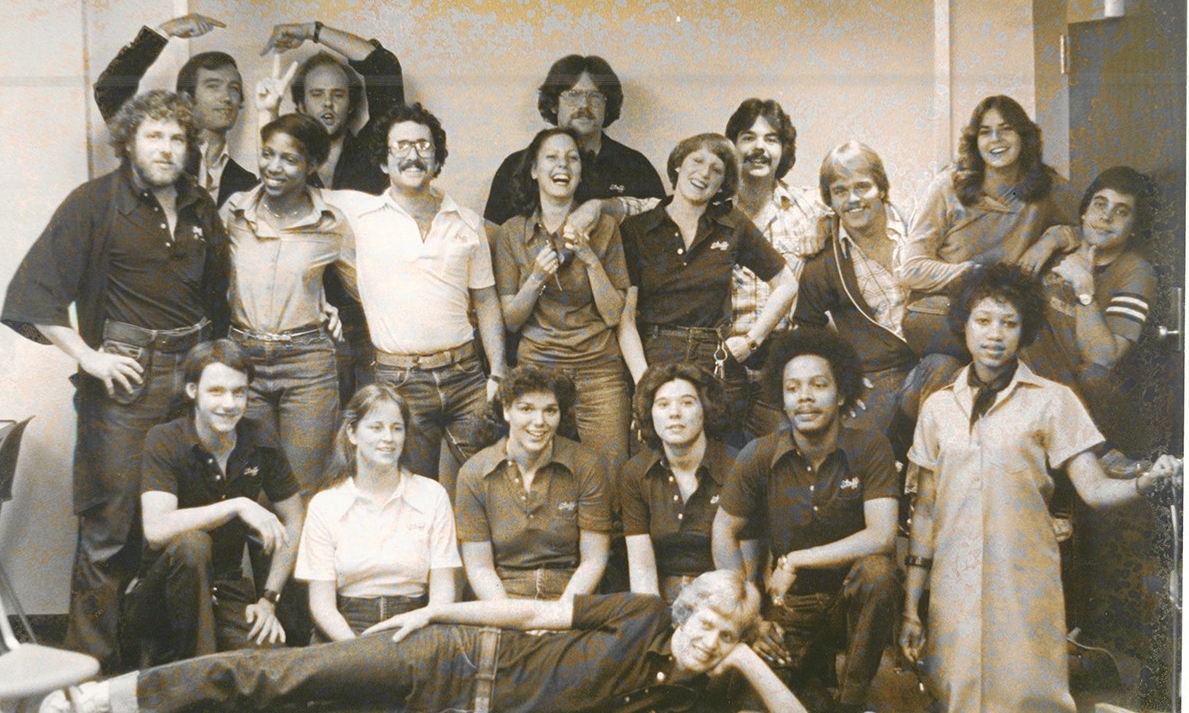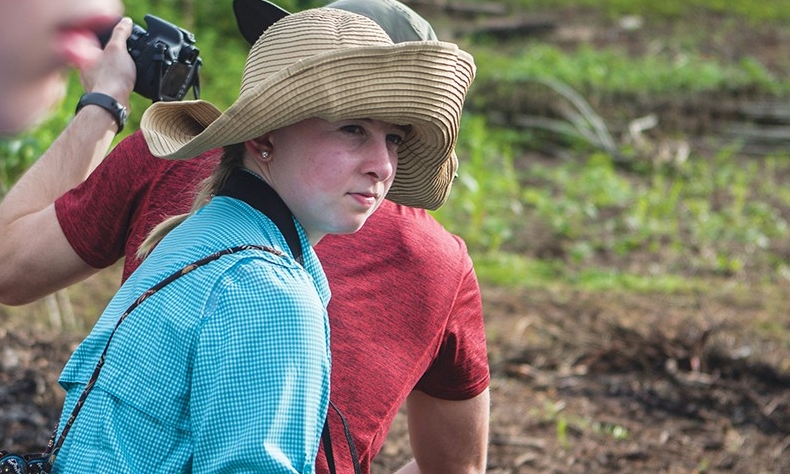“Capybara! Capybara!” the students erupt excitedly, as the supersized rodent – indeed, the world’s largest rodent, resembling a guinea pig on steroids – scurries along the shoreline before fleeing to the safety of water.
“You see him?” Maler asks, pointing to the V-shaped ripples in the water ahead.
“Where? Oh, look at the water!” cries Swanson.
“Ming, did you get it?” Morinec asks excitedly, as the two huddle over the third-year architecture student’s digital camera display.
“You know how many times I’ve seen a capybara in all the times I’ve been out here? That’s the second time, right there,” says Cindy Howard, a tropical ecologist from the University of Houston-Clear Lake tapped by UC to assist with the study tour, referencing her 25 years of leading expeditions in the Amazon basin.
“I feel so lucky,” says Swanson with a contented smile.
“You should, because that’s an unusual sighting,” responds Howard.
“And to think,” Maler says, turning to Swanson and pointing to the second fishing boat motoring across the river occupied by female students still oblivious of the group’s sighting, “we almost went on the boat with all the girls!”
The capybara disappears from view, and the students get back to the task at hand, plopping beef-laden lines into the water below. Before long, Swanson jerks up his line to find a long awaited five-inch silver-scaled piranha with obsidian eyes dangling from the hook.
“Luke, you did it,” Ming calls out in congratulations.
“It’s a game,” Swanson replies with newfound confidence. “Sometimes you get it, sometimes you don’t.”
The fading sun signals the days end with feathered strokes of purple, crimson and gold amid fleecy clouds. Guimarães turns the canoe back towards the riverboat that’s serving as the 10-day study tour’s floating home.
“I feel [people at home] will be a lot more impressed than they should be, but they don’t need to know that,” Swanson says of his catch. “There’s going to be a lot of embellishing going on.”
“We saw dolphins, otters and a capybara,” Maler says, gesticulating his hands animatedly. “The piranhas are nothing compared to the capybara.”
“I’m content,” Swanson replies. “Life is good.”
“It’s definitely one of those lifetime experiences,” says Maler.

